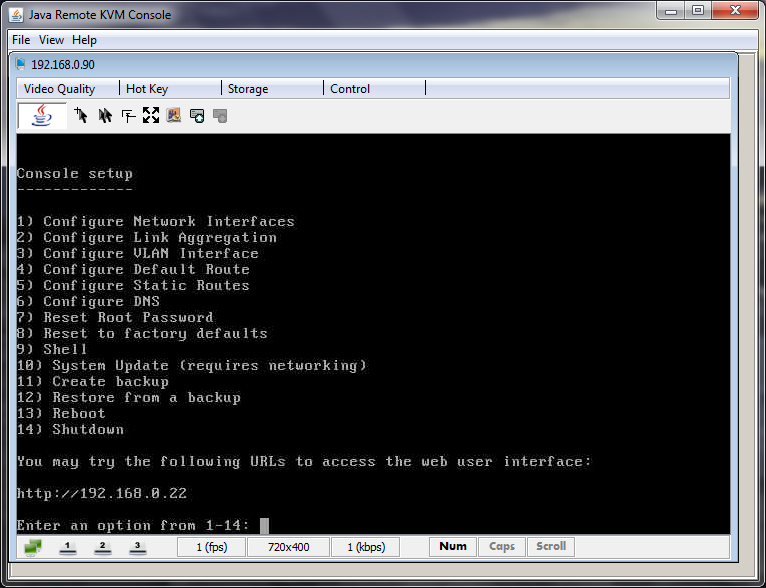Installing A Printer On Freenas Setup
The quickest and easiest way to get a FreeNAS server running is to write the image directly to a USB drive. After imaging the drive you can plug it into the computer, set the bios to boot from the drive, and watch FreeNAS boot directly from USB. This is the best “how to install Freenas” period. Scott T says: June 17, 2013. Download Printer Canon Ip2770 Driver.

*NOTE* @ -- We mentioned that it is not recommended to use SSDs as boot devices. SSDs CAN and are recommended to be used as boot devices, however, keep in mind that the FreeNAS partition will use the entire drive Download the latest FreeNAS ISO here: ** You will need to download the FreeNAS ISO and create an install/boot CD/USB to get started ** Create a boot CD on Windows: Create a boot CD on Mac: Create a boot USB on Windows/Linux/macOS: Create a boot USB on FreeBSD: For more information on iXsystems storage: Music credits: Candle Gravity - Tomies Bubbles Purple Rain - Sweet Success Kuwait Paragraphic - Quay Three.
Is an excellent network storage solution simple enough for anyone to install. The system and space requirements are ridiculously small for this stripped-down version of. It's got all manner of features accessible through it's clean web GUI, more than most will ever need.
It even lets you stream media to game consoles! Despite it's impressive built in abilities, there was one thing that I wanted it to do besides act as a great NAS, and that was to be a so I could share my among my Windows and Mac OSX boxes. Easier said than done. After hours of playing around with CUPS and a few broken installs later, I saw the light. On the FreeNAS forums, user sgrizzi created a thread on with, using the package, for a based setup.
It was EXTREMELY helpful, and he/she should get most of the credit, but the thread really needs to be condensed and clarified to be a useful guide. That is exactly what this Instructable is for, as well as modifying it for a standard full install of FreeNAS. This guide assumes you already have a current standard install of FreeNAS set up and working. First, let's get together a few things and take a look at the setup. The Network Your setup may be different, but mine is as follows.
- Linksys WRT54GL router running Tomato firmware v1. Biology In Context The Spectrum Of Life Pdf Printer there. 23 - FreeNAS box - v0.69, old Sony Vaio, 2 hard drives, static IP: 192.168.1.50 - PC - Windows XP SP3 - Macbook Pro - OSX 10.5.6 - HP Deskjet 6540 - USB connected printer, attached to FreeNAS You will need to assign your FreeNAS box a static internal IP from within your router. There's plenty of guides online for that, all straight-forward, so do a quick Googling. Stuff You'll Need - Windows install disk if you're using Windows (necessary files may be availible elsewhere, but this is the easiest) - Printer Drivers for your particular make/model - The file 'ulpt.ko' taken from a full FreeBSD install. File attached to this instructable. - SSH client - For Windows, go with. For Linux, Unix, Mac, etc you can just use the terminal/command line Attachments •. Connect to your FreeNAS box via SSH.
Normally it's bad practice to log in as root, but if you're really careful, things should go smoothly. PuTTy is pretty self explanatory here for connecting. For the command line people, type: ssh -l username static_ip_of_freenas The static ip will be something like 192.168.x.xxx. It will ask for a password, but when you type, nothing shows up. Don't worry, this is normal (hides password for security purposes); just type it and hit enter. You should now have yourself a little greeting and a new command prompt (loggin in as root is freenas:~# and as a user is >). Load ulpt.ko Module First we want to make sure that ulpt.ko loads on boot so as soon as we connect a printer it'll recognize it properly.
Type: nano /boot/defaults/loader.conf Scroll down with either the arrow keys or ctrl+V until you reach a section titled 'USB Modules' Change the line 'ulpt_load=' NO' # Printer' to 'ulpt_load=' YES' # Printer' Hit ctrl+X. Then type 'y', and hit enter when it asks you to save. Start LPRng Navigate to the FreeNAS web interface in a browser. Then go to System-->Advanced-->rc.conf Use the '+' button to add two new entries: Name: lpd_enable Value: NO Name: lprng_enable Value: YES. There are three main files that contribute to LPRng working properly.
- /etc/printcap - /usr/local/etc/lpd.perms - /usr/local/etc/lpd.conf Printcap (location: /etc/printcap) can be very complex or very simple. We'll go with very simple, but you can refer to the LPRng site and google for some different setups depending on your needs. It'll be much easier to illustrate this by example: # @(#)printcap HP Deskjet 6540 lp deskjet::sd=/var/spool/lpd/bare::sh::lp=/dev/ulpt0: # First line doesn't matter much. Resetter Epson Stylus C90 Windows 7. Just put your printer make/model in there for reference - 'lp deskjet' - this is what you're printer will be known as. 'lp' is the primary name, 'deskjet' is an alias. - 'sd=' This is the path to the print spooler. We're going to make this directory in a second.